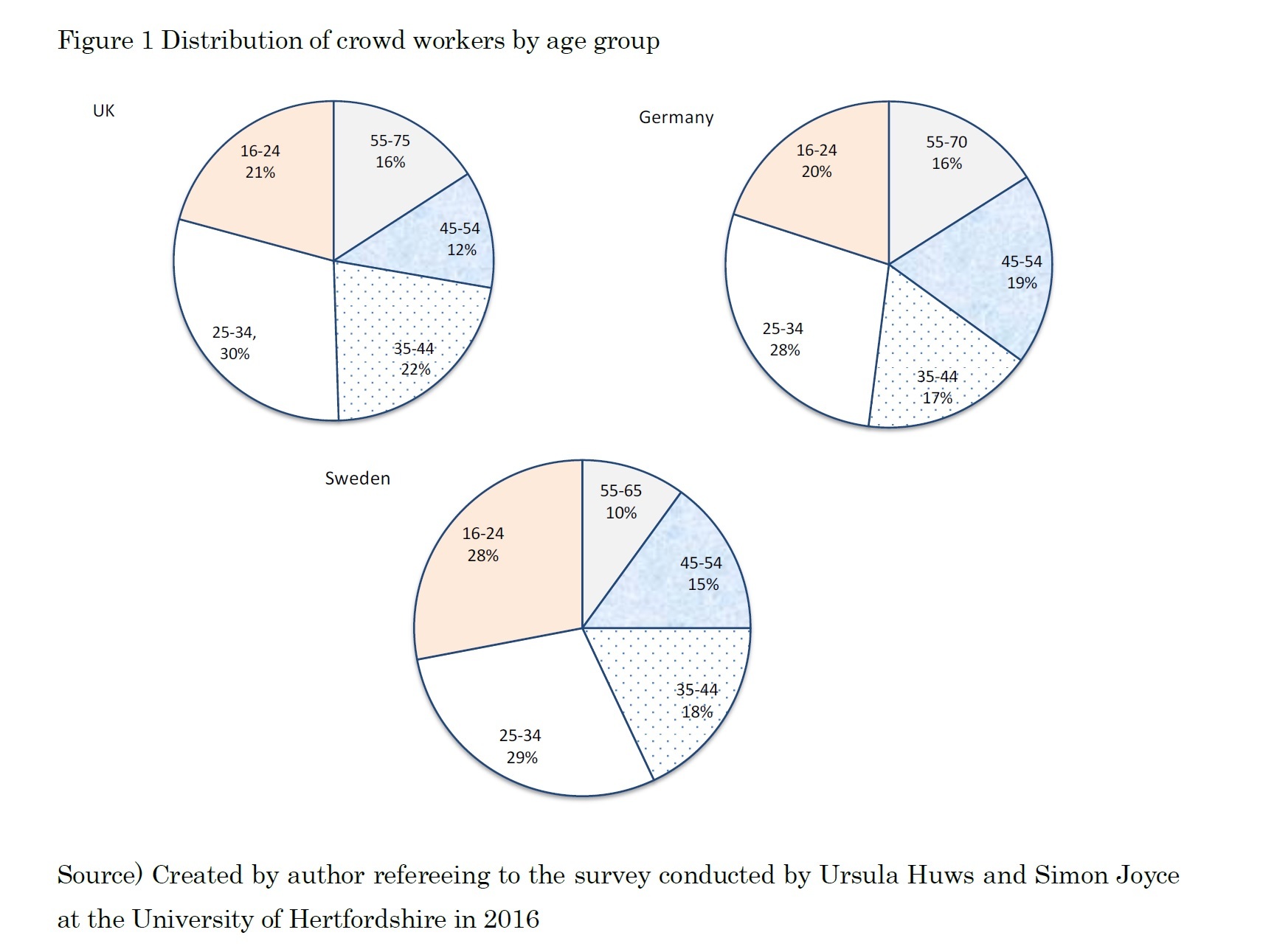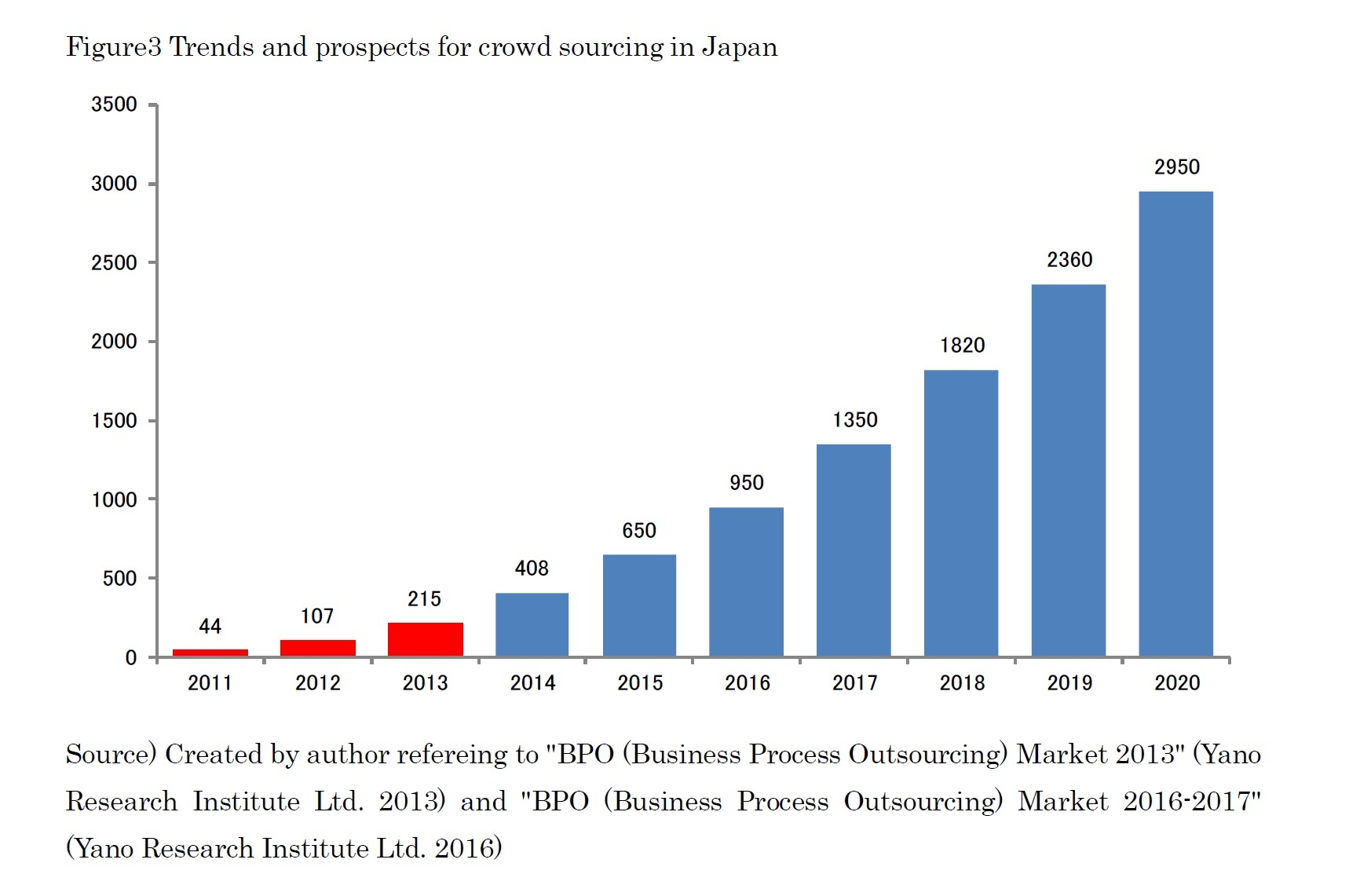- NLI Research Institute >
- Economics >
- Crowd work: The rise of unstable work and potential measures to prevent the proliferation of the working poor
Crowd work: The rise of unstable work and potential measures to prevent the proliferation of the working poor
Social Improvement and Life Design Research Department Research fellow Kim Myoungjung
Font size
- S
- M
- L
The current situation of crowd workers in the U.S. and Europe
Additionally, it is difficult to compare the data because the available data differs depending on the country. According to the survey “Freelancing in America: 2016”, conducted by Upwork , formerly Elance-oDesk,which is a global freelancing platform Union, the number of freelancers in the U.S. was 55 million in 2016. This reflects an increase of 2 million from 2014, and means that freelancers account for 35% of the entire U.S. workforce. The survey also forecasts that freelance will be responsible for about 50% of the whole workforce by 2020.
No longer just a label for journalists and photographers, the term “freelancer” is now understood to apply to a wide variety of careers, including bloggers, designers, Youtubers, and IT engineers. A main difference between the present day’s freelancers and those of the past is that most of the workers seek their work through Internet platforms. Therefore, it can be said that an increase in freelancers leads to growth in the number of crowd workers.
The current situation of crowd workers in Japan
(1) Side job-type freelance (those who work freelance as a supplement to full-time work)
(2) Multiple job-type freelance (those who work for multiple companies regardless of the employment system)
(3) Professional-type freelance (those who are independent professionals without specific workplaces)
(4) Self-employed-type freelance (those who are owners managing their own businesses)
There has been an especially large increase in the number of side job-type freelance—4.58 million in 2017, up from 4.16 million in 2016. The Japanese government is laying out a policy to support a full-time worker`s secondary job as part of the work-style reforms. Thus, the number of side job-type freelancers is expected to rise more and more. However, in Japan, many of the freelances are currently participating in the labor market with unstable earnings.
For example, the average annual income of "Self-employed-type freelance" with the highest income among freelances is 3.5 million yen, which is lower than employee's average salary of 4.2 million yen. Most of the freelances enter the labor market with unstable earnings,
At the moment, the number of registered businesses operator who provide crowd sourcing in Japan has reached hundreds of thousands. According to the “2014 White Paper on Small and Medium Enterprises in Japan” by the Small and Medium Enterprises Agency, the rate of corporations with less than five full-time employees that have ordered crowd sourcing sites to work has risen by about 70%. The contents of the work of the crowd worker using a crowd sourcing is including simple tasks like data entry, but also more complicated jobs like development assistance for AI. Therefore, the use of crowd sourcing in Japan is expected to increase in the future.
Future challenges and measures
Most crowd workers are placed in an economically bad situation. However, discussions about crowd workers’ social and economic status are becoming more common, and the movement to improve their working standards is expanding slowly in the U.S. and Europe. In Japan, while specific measures for improving conditions for crowd workers have not been implemented, it is expected that non-regular employees’ working standards will be improved because of the promotion of equal pay for equal jobs in the near future.
Maintaining the current situation, in which Labor Standards laws have not yet been implemented, could lead to an increase in the working poor more and widen pay gap issues. To prevent this, the government should take the lead in improving the current situation of crowd workers. The government should implement measures to improve working condition standards, not only for non-regular employees but also for crowd workers at the same time. Expanding and applying the exception for homeworkers, which is currently implemented, could be one step. To conclude, the researchers and policy-makers should kick off the measures for crowd workers by referring to the example in the U.S and Europe at the earliest.

Social Improvement and Life Design Research Department Research fellow
Kim Myoungjung
Research field
03-3512-1878
レポート紹介
-
研究領域
-
経済
-
金融・為替
-
資産運用・資産形成
-
年金
-
社会保障制度
-
保険
-
不動産
-
経営・ビジネス
-
暮らし
-
ジェロントロジー(高齢社会総合研究)
-
医療・介護・健康・ヘルスケア
-
政策提言
-
-
注目テーマ・キーワード
-
統計・指標・重要イベント
-
媒体
- アクセスランキング




















